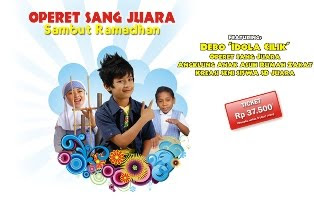My Indonesia
Indonesia, the largest archipelago and the fifth most populous nation in the world, has a total of 17,508 islands, of which about 6,000 are inhabited. Indonesia extends 3,198 miles (5,150km) between the Australian and Asian continental mainland and divides the Pacific and Indian Oceans at the Equator. With a total land area of 767,777 square miles (1,919,443 sq. km), its 190 million inhabitants are made up of 300 ethnic groups who speak an estimated 583 different languages and dialects. There are five main islands in Indonesia. These are: Java, Sumatra, Kalimantan, Sulawesi and Irian Jaya.
Across its many islands, Indonesia consists of distinct ethnic, linguistic, and religious groups. The Javanese are the largest and most politically dominant ethnic group. Indonesia has developed a shared identity defined by a national language, ethnic diversity, religious pluralism within a majority Muslim population, and a history of colonialism and rebellion against it. Indonesia's national motto, "Bhinneka Tunggal Ika" ("Unity in Diversity" literally, "many, yet one"), articulates the diversity that shapes the country. However, sectarian tensions and separatism have led to violent confrontations that have undermined political and economic stability. Despite its large population and densely populated regions, Indonesia has vast areas of wilderness that support the world's second highest level of biodiversity. The country is richly endowed with natural resources, yet poverty is a defining feature of contemporary Indonesia.
Across its many islands, Indonesia consists of distinct ethnic, linguistic, and religious groups. The Javanese are the largest and most politically dominant ethnic group. Indonesia has developed a shared identity defined by a national language, ethnic diversity, religious pluralism within a majority Muslim population, and a history of colonialism and rebellion against it. Indonesia's national motto, "Bhinneka Tunggal Ika" ("Unity in Diversity" literally, "many, yet one"), articulates the diversity that shapes the country. However, sectarian tensions and separatism have led to violent confrontations that have undermined political and economic stability. Despite its large population and densely populated regions, Indonesia has vast areas of wilderness that support the world's second highest level of biodiversity. The country is richly endowed with natural resources, yet poverty is a defining feature of contemporary Indonesia.
Wednesday, April 8, 2009
BEKEL
I like it... I like to play this game
not long ago , I used to play it with my students. But now I don't (-.-)
Well, let's find out, what Bekel is.
This is the equivalent of western jacks, and is commonly played by Indonesian girls. The shape of the bekel differs from the western jacks in that they are flat with a small bridge holding the two sides together. On the upper side of the biji bekel there is a small red dot that is called the pit. The under side of the bekel is called a roh. On one of the flat sides of the biji bekel there are small indentations or dots and the other side is smooth.

The game is played is a similar method to jacks, but with a few differences. When the game is started, the biji bekel are all held in the hand of the player and are dropped as the ball is allowed to bounce one time. The player then starts to play by attempting to pick up the biji bekel one at a time without disturbing any of the other biji bekel within the time that it takes the ball to bounce once.
If the player successfully has picked up all of the bekel, he then drops them again and starts the second set of the game. In this set he must attempt to position the biji bekel with the pit facing up again one at a time. This action must be completed while the player throws the ball in the air and allows it to bounce one time. The player must attempt to turn over the bekel without moving any of the other bekel.
If the player completes this successfully, he then picks up the biji bekel one at a time while throwing the ball in the air until he has all of the biji bekel in his hand. He then drops them all again and now picks the biji bekel up two at a time and then three at a time, etc. until he picks up all the biji bekel with one sweep of the hand.
He drops them again and now starts the roh set. The player must attempt to turn over all the biji bekel so the roh side is now facing up. It is permitted to pick up more than one group of the set number while the ball is being thrown in the air. For example if the player is picking up groups of two while the ball is being thrown in the air, he may grab three groups of two bekel. The action of grabbing a set number of bekel is called cek.
If the player moves any of the biji bekel that he is not attempting to pick up, or if he drops any of the biji bekel in his hand, he loses his turn and it goes to the next player. A skilled player can go through many sets of the game before he makes a mistake and has to turn the bekel over to the next player. The player that completes the most sets without making a mistake is considered the winner of the game.
The name is derived from the Dutch game"bikkelen" using the same copper "bikkels".
ah, talking bout this game. remembering minie's childhood.
sources : expat.or.id, anakreatif.com
Labels: Indonesian Traditional Games
0 Comments:
Subscribe to:
Post Comments (Atom)



,+Jakarta.jpg)




Post a Comment